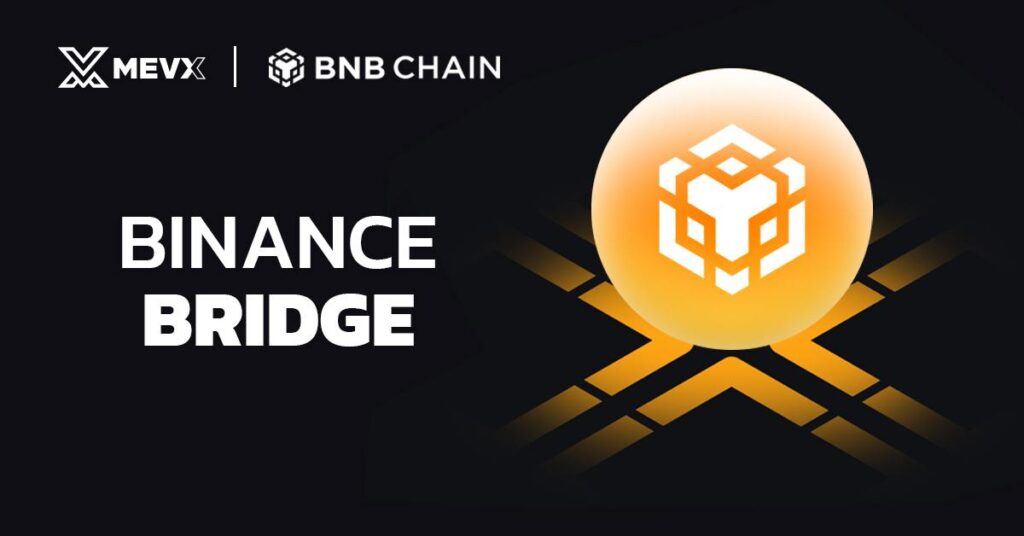The Binance Bridge can be incredibly powerful for seamless asset movement between the BNB Chain and other chains like Ethereum. Be it optimizations of fees, interactions with DApps, or cross-chain opportunities, Binance Bridge is going to make it easy for you. The following guide explains exactly how to use it.

What You Need to Bridge to the BNB Chain
Before you begin, ensure you have the following:
1. A Supported Wallet
MetaMask or any other hot wallet compatible with the BNB Chain. These let you send, withdraw, and deposit tokens, as well as communicate with the bridge. Follow our Guide to setting up a BNB Wallet.
2. Sufficient Gas Fees
- BNB: In order to pay fees for transactions across the BNB Chain.
- ETH: In order to pay fees for bridging tokens from the Ethereum network over to the BNB Chain.
Pro Tip: If you’re new to acquiring tokens, platforms like Binance’s Coin Detail Page can guide you in purchasing BNB or ETH.
3. A Bridge Address or Binance Account
- BNB Chain Bridge Address: A smart contract that facilitates cross-chain transfers.
- Binance Account: An alternative option for bridging via Binance’s exchange platform, which simplifies the process.
How to Bridge Tokens to BNB Chain
The Binance Bridge supports ERC-20 tokens and allows transfers both to and from the BNB Chain. Below are the steps to use either method:
1. Using Binance Exchange
- Log In to Your Binance Account: Navigate to Binance.com and sign in.
- Access the Deposit Feature: In your dashboard, go to Wallet > Fiat and Spot, then click Deposit for the asset you wish to bridge.
- Select Blockchain and Copy the Deposit Address: Choose the blockchain for your deposit. Copy the deposit address and paste it into your MetaMask wallet. Confirm the transaction.
- Initiate Withdrawal to the BNB Chain: Once your assets are deposited, go back to the Withdrawal section. Enter the withdrawal address on the BNB Chain. Select the desired network and confirm.
- Complete Two-Factor Authentication: Finalize the transaction with your two-factor authentication. Congratulations! Your assets are now bridged to the BNB Chain.
Note: Bridging via Binance eliminates the need for BNB gas fees, though a small withdrawal fee is deducted in the bridged asset.
2. Using Trustless Cross-Chain Solutions
For those who prefer not to use an exchange, Binance Bridge integrates with tools like Celer cBridge for direct, decentralized transfers. These tools provide additional flexibility for advanced users and ensure a trustless, peer-to-peer bridging experience.
- Visit the Binance Bridge Interface: Access the official Binance Bridge page or partner interfaces.
- Choose Source and Destination Networks: Select the blockchain you’re transferring from (e.g., Ethereum) and to (e.g., BNB Chain).
- Specify the Asset and Amount: Enter the token and the quantity you wish to bridge. Confirm all details to proceed.
- Sign the Transaction: Approve the transaction using your MetaMask or other supported wallets. The process is completed on-chain.
Benefits of Bridging with Binance Bridge
- Multi-Chain Support: Enables transfers across BNB Chain, Ethereum, and other EVM/non-EVM-compatible blockchains.
- Low Fees: Competitive gas fees, with some options eliminating BNB as a prerequisite.
- Ease of Use: Simplified process via Binance exchange for beginners, with trustless alternatives for experienced users.
Conclusion
Being able to bridge through Binance also saves users enormous fees. Also, the support by Binance Bridge across several chains allows one to achieve increased accessibility and convenience while bridging across several chains. In general, utilizing Binance Bridge makes bridging across several networks easy and less costly.
Share on Social Media:
